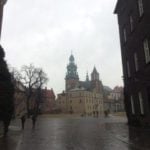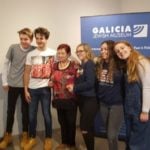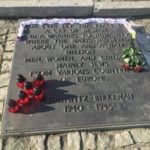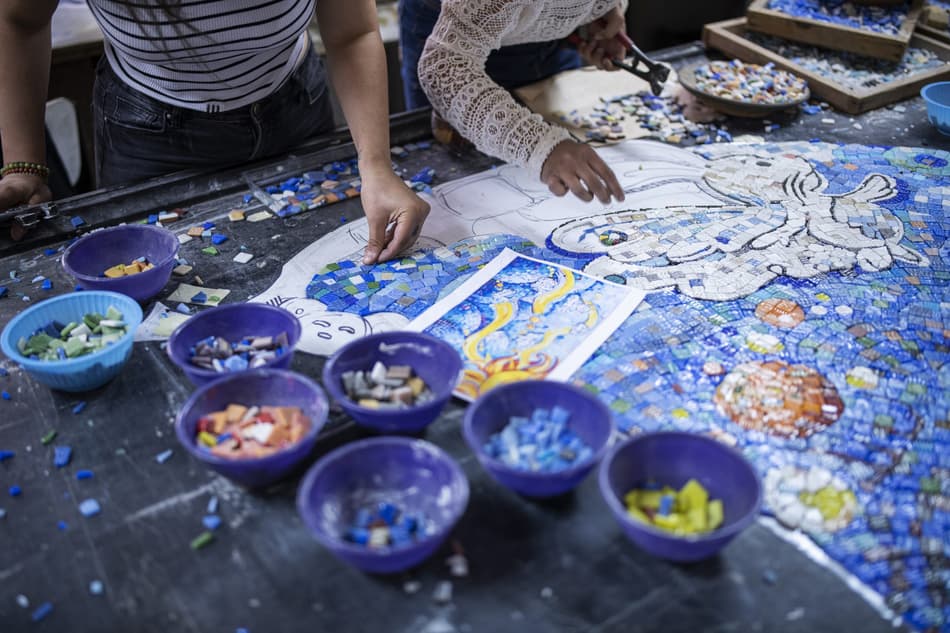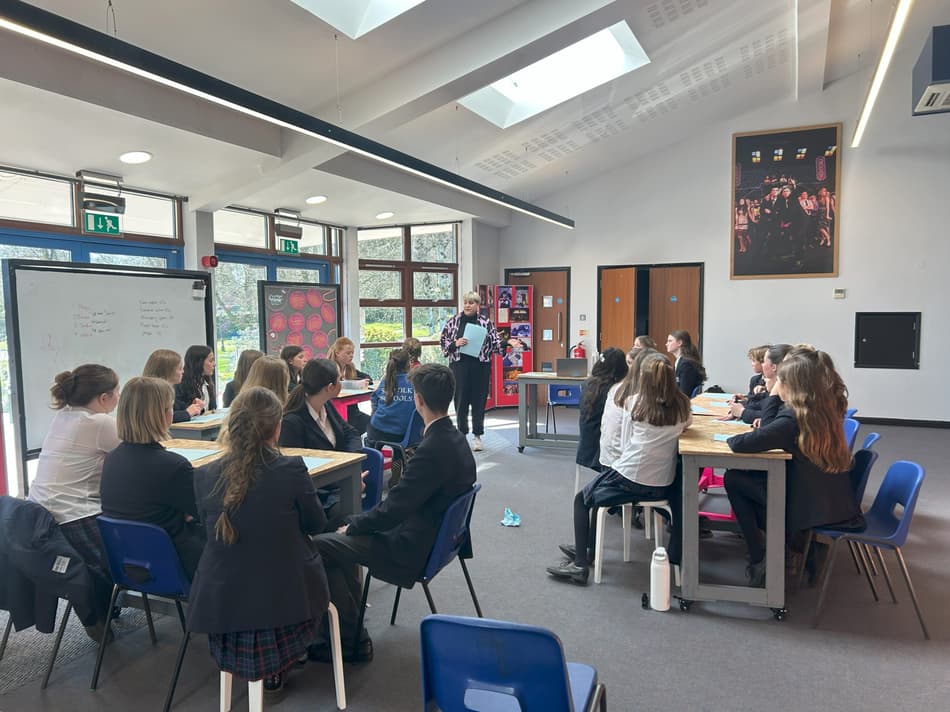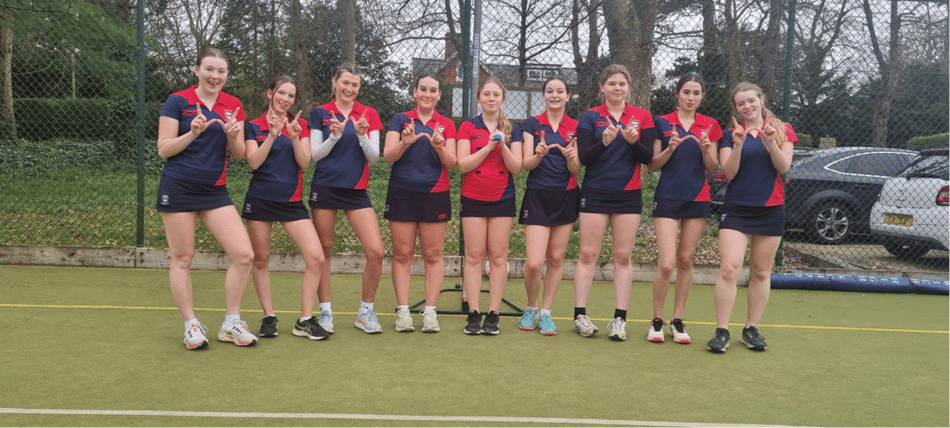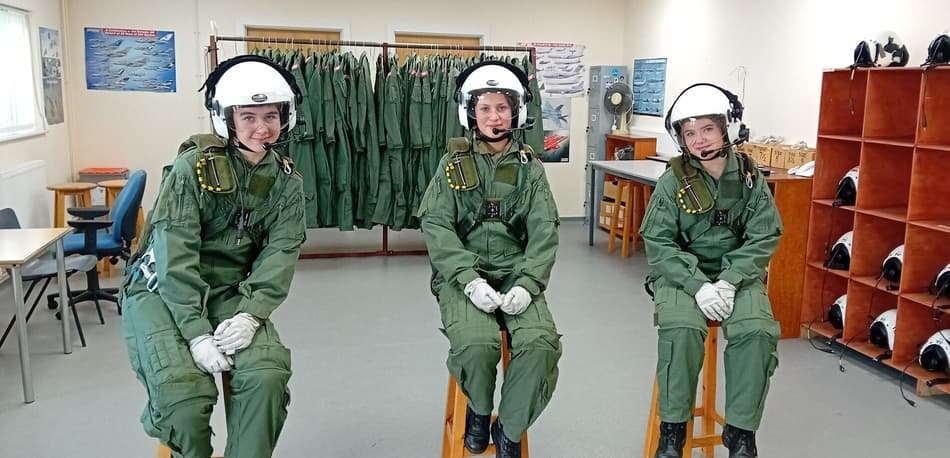James Brooks Reflects: From the thriving city centre of Kraków to the heart wrenching plains of Birkenau, the 2017 RS trip to Poland was without a doubt an emotional but worthwhile experience. In addition we all encountered things that maybe we weren’t comfortable with or just down right disgusted by. In particular the horrendous anti-Semitism that was ingrained in the commanders of the Nazi party and how they inflicted their seemingly lurid Jewish ideology on Poland. But what surprised us the most was how much the Jewish population of Poland flourished in the years up until the Nazi invasion. Astonishingly 7 synagogues stood in Kraków alone. Many questions flew around our heads. Where does this inner hatred of Jews stem from? How could anyone or anything be so sadistic and cruel to innocent people? The most harrowing account of such repulsive anti-Semitism is an account of the Ghetto told to us by a holocaust survivor. “They were looking for a missing man. They could not find him. In anger they pushed a severely disabled man off a two-storey balcony. He died.” When such words passed the translator’s lips, the silence that was already being observed somehow became even more silent.
Day 1
Today we visited Oświęcim (Auschwitz) and Auschwitz II – Birkenau. These two visits affected us all very deeply and triggered a complex emotional response to the atrocities that happened within. In spite of this, we all learned many new things about the Holocaust that maybe some of us weren’t comfortable with. However on the whole we gained a more well-informed sympathy for the Holocaust victims.
Day 2
Kraków had a lot more to offer than was first apparent. Part of the city was once an Island and amazingly had one of the biggest Jewish populations in Europe only a few hundred years ago. The guide had impeccable English and taught us about the history of the Jewish people in Kraków. The Ghetto area was very moving because there was a memorial of chairs for the Jewish people that died in Kraków, every chair represented 1,000 people, in all there were 60 chairs. The visit to Schindler’s factory really emphasised how badly the Jewish community was treated.
Day 3
The final day began with us trying and surprisingly succeeding in making our own way to the Galijca Jewish Museum. Inside was a plethora of picture of the Jewish Heritage and presence in Kraków. This museum was particularly unique compared to the others we had visited, because it showed Poland and its Jewish Communuty in the pre-war period, as well as covering the two world wars. However the most poignant moment of the day and perhaps the whole trip was meeting an actual Holocaust survivor. She told us harrowing stories of her oppression as a polish Jew and her life in the Kraków ghetto. But perhaps the thing that really impacted us was that she looked perfectly ordinary, she didn’t look any different to people like our neighbours. It really hit home how anyone that you knew could have been a victim in the Holocaust. Our time in Poland was rounded off perfectly when we spent the majority of the afternoon in Kraków. A city steeped in an immense amount of history, synagogues, churches and a castle among the many beautiful sites in Krakòw. Our trip to Poland was a once in a lifetime experience and we were described by one teacher as being “beacons of brillance” showing how much the teachers that went with us also enjoyed the trip!
James Brooks Reflects: From the thriving city centre of Kraków to the heart wrenching plains of Birkenau, the 2017 RS trip to Poland was without a doubt an emotional but worthwhile experience. In addition we all encountered things that maybe we weren’t comfortable with or just down right disgusted by. In particular the horrendous anti-Semitism that was ingrained in the commanders of the Nazi party and how they inflicted their seemingly lurid Jewish ideology on Poland. But what surprised us the most was how much the Jewish population of Poland flourished in the years up until the Nazi invasion. Astonishingly 7 synagogues stood in Kraków alone. Many questions flew around our heads. Where does this inner hatred of Jews stem from? How could anyone or anything be so sadistic and cruel to innocent people? The most harrowing account of such repulsive anti-Semitism is an account of the Ghetto told to us by a holocaust survivor. “They were looking for a missing man. They could not find him. In anger they pushed a severely disabled man off a two-storey balcony. He died.” When such words passed the translator’s lips, the silence that was already being observed somehow became even more silent.
Day 1
Today we visited Oświęcim (Auschwitz) and Auschwitz II – Birkenau. These two visits affected us all very deeply and triggered a complex emotional response to the atrocities that happened within. In spite of this, we all learned many new things about the Holocaust that maybe some of us weren’t comfortable with. However on the whole we gained a more well-informed sympathy for the Holocaust victims.
Day 2
Kraków had a lot more to offer than was first apparent. Part of the city was once an Island and amazingly had one of the biggest Jewish populations in Europe only a few hundred years ago. The guide had impeccable English and taught us about the history of the Jewish people in Kraków. The Ghetto area was very moving because there was a memorial of chairs for the Jewish people that died in Kraków, every chair represented 1,000 people, in all there were 60 chairs. The visit to Schindler’s factory really emphasised how badly the Jewish community was treated.
Day 3
The final day began with us trying and surprisingly succeeding in making our own way to the Galijca Jewish Museum. Inside was a plethora of picture of the Jewish Heritage and presence in Kraków. This museum was particularly unique compared to the others we had visited, because it showed Poland and its Jewish Communuty in the pre-war period, as well as covering the two world wars. However the most poignant moment of the day and perhaps the whole trip was meeting an actual Holocaust survivor. She told us harrowing stories of her oppression as a polish Jew and her life in the Kraków ghetto. But perhaps the thing that really impacted us was that she looked perfectly ordinary, she didn’t look any different to people like our neighbours. It really hit home how anyone that you knew could have been a victim in the Holocaust. Our time in Poland was rounded off perfectly when we spent the majority of the afternoon in Kraków. A city steeped in an immense amount of history, synagogues, churches and a castle among the many beautiful sites in Krakòw. Our trip to Poland was a once in a lifetime experience and we were described by one teacher as being “beacons of brillance” showing how much the teachers that went with us also enjoyed the trip!
